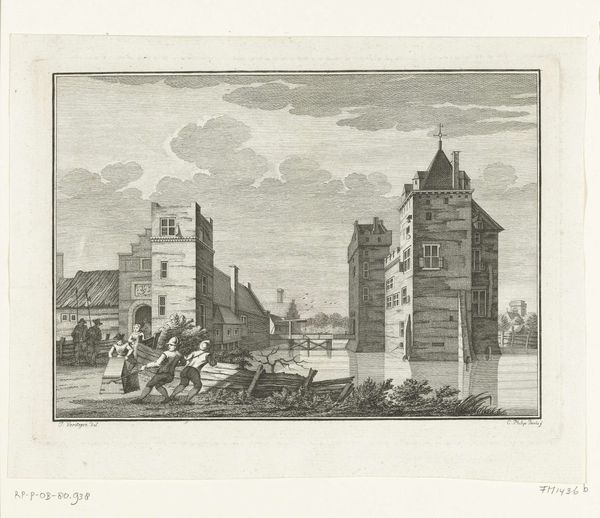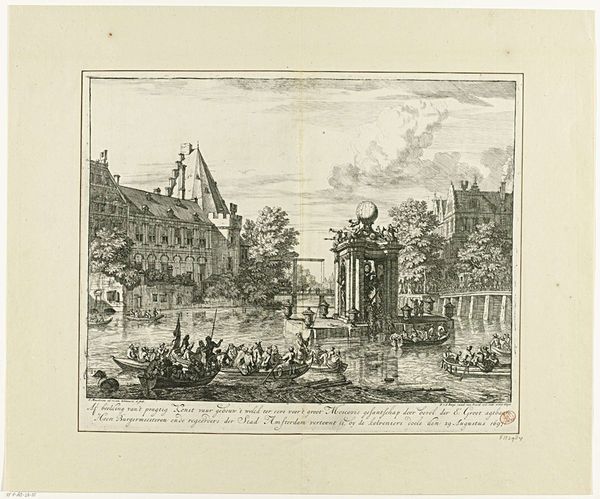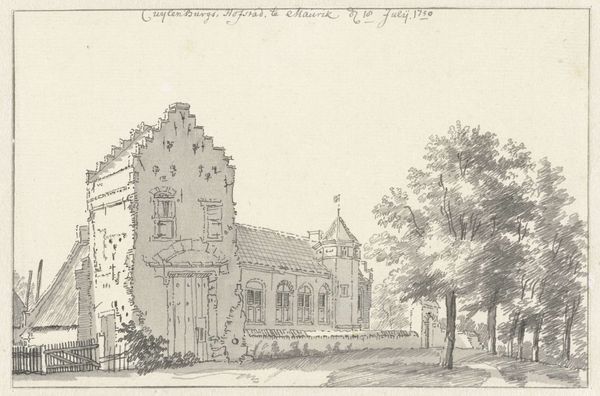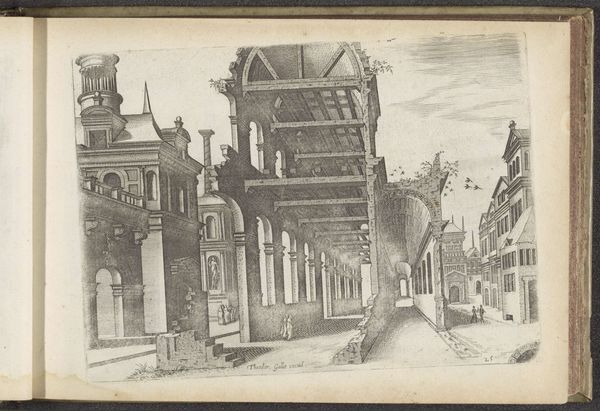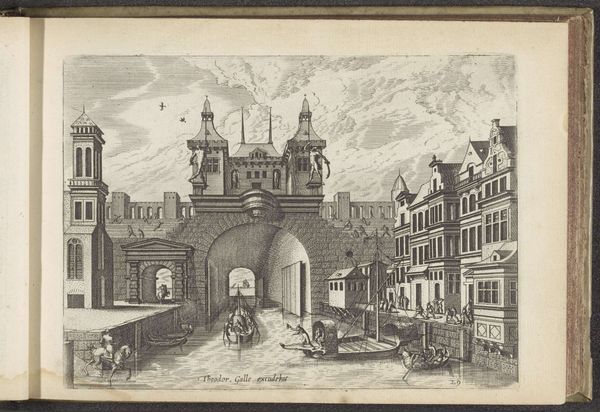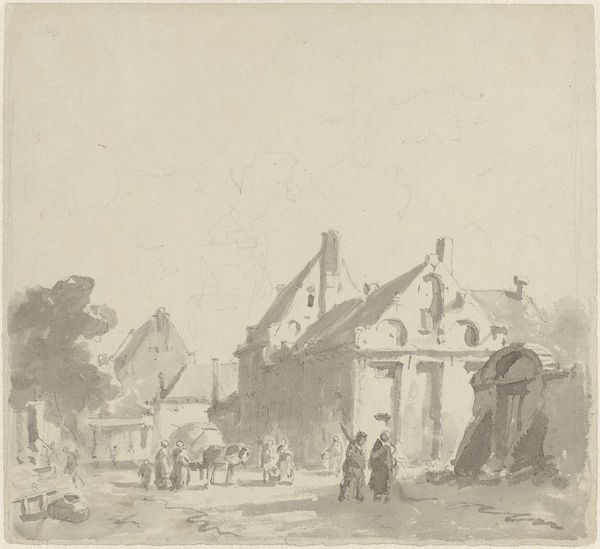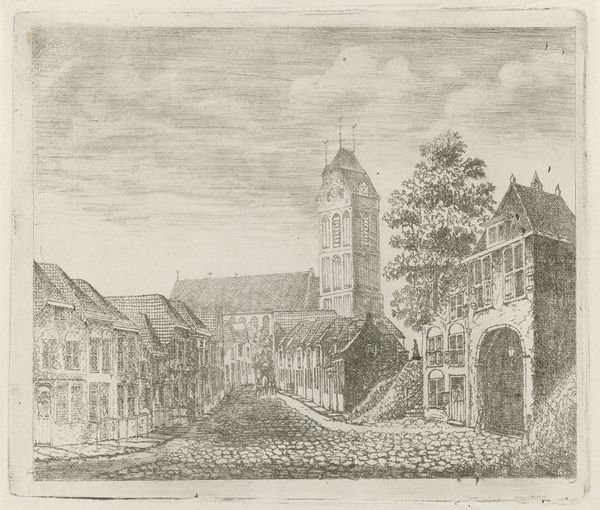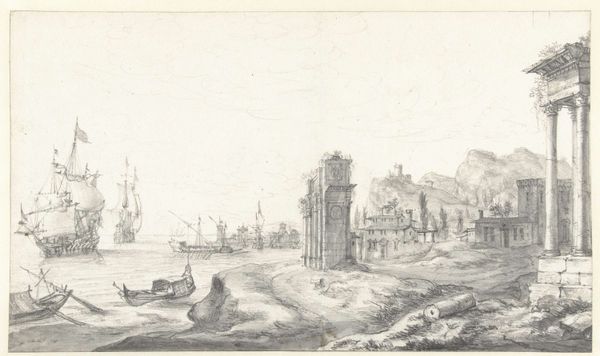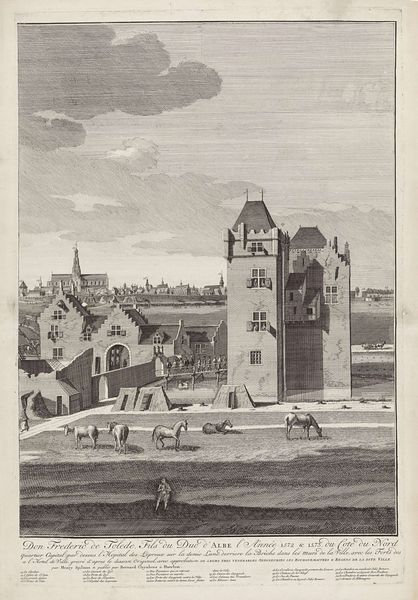
Ontsnapping van Hugo de Groot in de boekenkist uit Slot Loevestein, 1621 c. 1752 - 1789
0:00
0:00
Dimensions: height 165 mm, width 212 mm
Copyright: Rijks Museum: Open Domain
This etching by Caspar Jacobsz. Philips, made in the 18th century, depicts Hugo de Groot’s escape from Loevestein Castle in 1621. Philips used etching, a printmaking technique, to create this image. A metal plate, usually copper, is coated with a waxy, acid-resistant substance called a ground. The artist then scratches an image into the ground, exposing the metal. When the plate is immersed in acid, the exposed lines are eaten away, creating grooves. Ink is applied to the plate, filling the grooves, and then the surface is wiped clean. Finally, paper is pressed against the plate, transferring the ink and creating a print. The fine lines and detailed shading of the etching bring the dramatic scene to life. The weight of the book chest, emphasized by the strain on the men carrying it, reminds us of the weight of the political ideas it concealed. The work involved in creating the print mirrors the effort required for such a daring escape. By focusing on the materiality and process of this etching, we can appreciate how the craft itself enhances the storytelling and historical significance of the artwork.
Comments
No comments
Be the first to comment and join the conversation on the ultimate creative platform.
